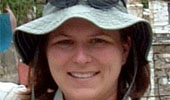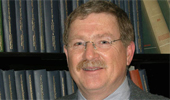The Geological Sciences Colloquium Series presents Dr. Michael M. McGlue on “The Back-Bulge Depozone: Modern and Ancient Depositional Styles and Their Implications for Petroleum Resources in Retroarc Foreland Basins” on Friday, April 18, at 2 p.m. in Clippinger 205.
McGlue is Assistant Professor in the Department of Earth & Environmental Sciences at the University of Kentucky.
Abstract: The concept of foreland basin systems (sensu DeCelles and Giles, 1996) has evolved rapidly over the past several decades, with most geoscientists now recognizing a complex coupling between fold-thrust belt evolution and syn-orogenic sedimentation. Current retroarc foreland basin models account for the occurrence of widespread accommodation space and sediment accumulation cratonward of the crest of the forebulge. This distal depozone, termed a back-bulge, forms due to both flexure from topographic loading as well as long-wavelength dynamic slab-driven subsidence associated with subduction. Back-bulge strata have proven exceptionally valuable for inferring the tectonic history of Cordilleran-style mountain belts (e.g., the central Andes), as well as for advancing our understanding of paleoclimate, paleohydrology and paleobiology over different intervals of Earth history. Moreover, evidence suggests that organic sedimentation associated with back-bulge lakes and floodplain wetlands, as well as restricted marine environments, has important implications for petroleum source rock development in foreland basins. In spite this value, back-bulge depozones and their deposits remain in relative obscurity, due to incomplete treatment in the sedimentary geology literature. This seminar places a spotlight on the back-bulge, and examines the current state of limnogeological research on several key back-bulge depozones. Field and satellite remote sensing datasets will be used to compare depositional styles between modern and ancient back-bulge settings. Particular focus will be placed on patterns and processes of fluvial-lacustrine sedimentation, using case studies from the Quaternary Andean and Jurassic-Cretaceous Sevier foreland basins.




















Comments